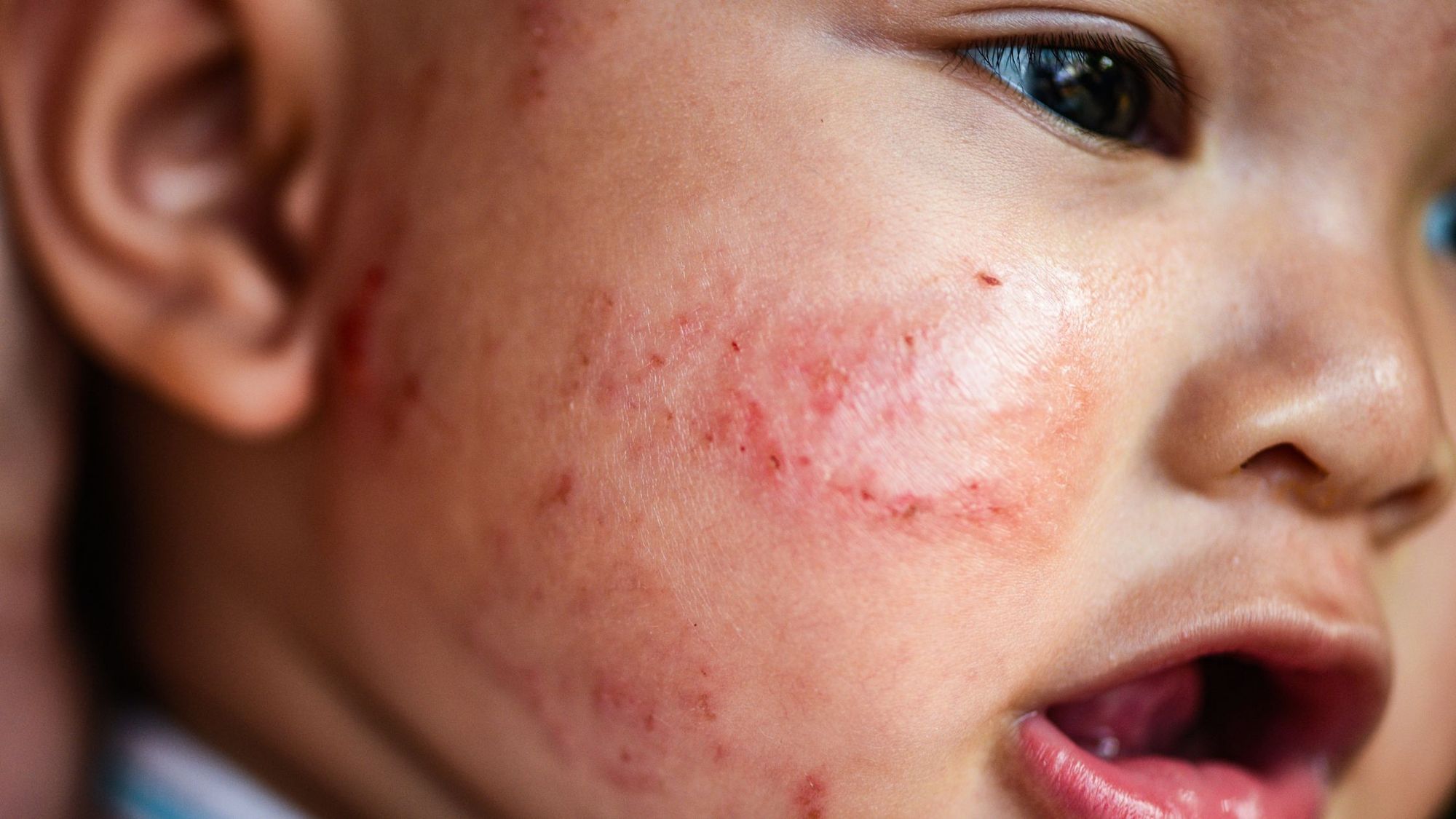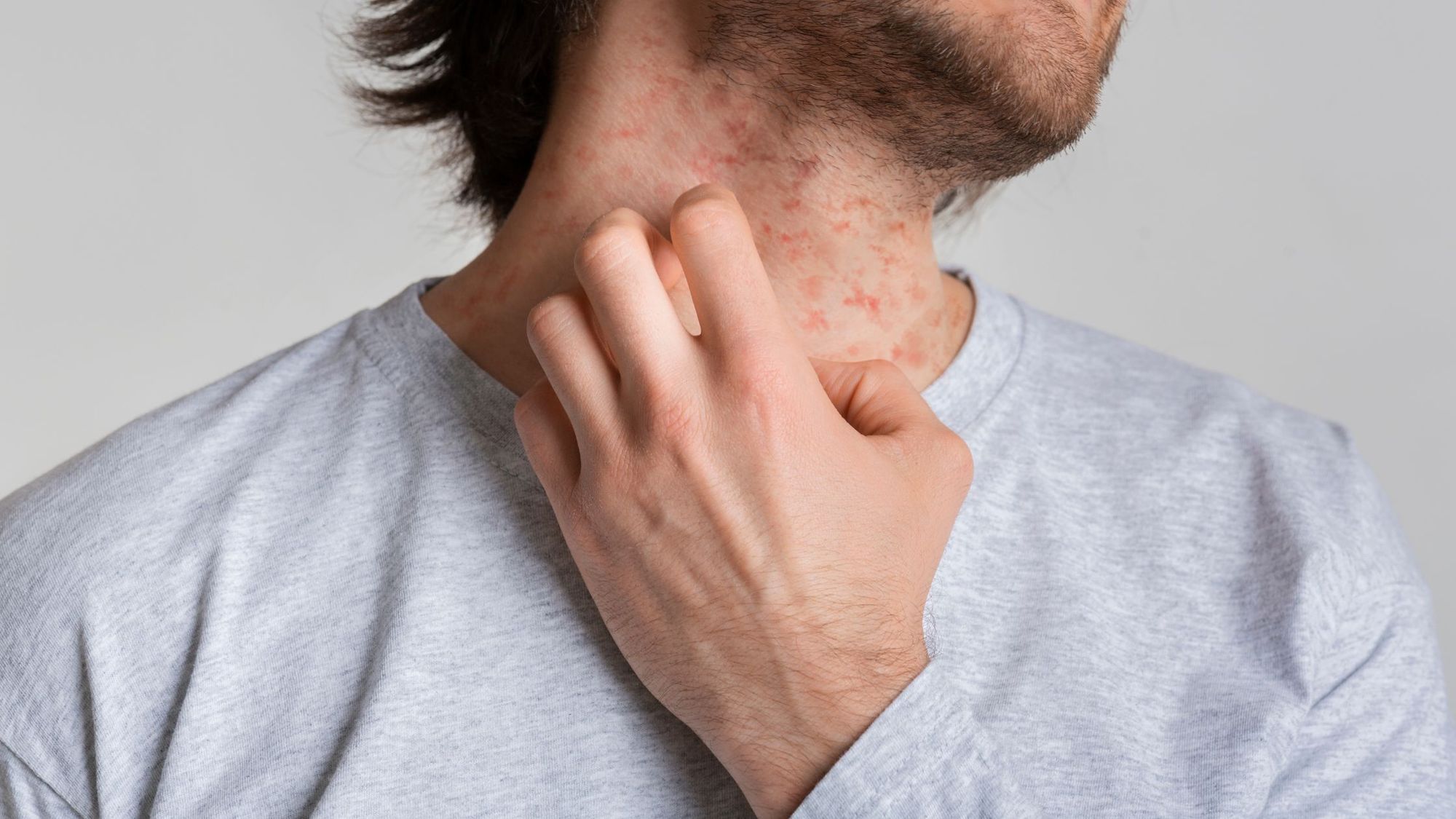
Eczema, a common skin condition, generally includes dry patches of skin, irritation, itchiness, crusting, oozing, inflammation, and discoloration on the skin. However, there are different types of eczema, each with varying triggers and characteristics.
Knowing the various types of eczema will help you avoid flare-ups and manage your symptoms. After all, living with eczema could be very uncomfortable and difficult. That being said, eczema is not contagious, so you don’t have to worry about passing it on to other people.
Studies show that eczema affects 20% of children in various countries but the prevalence or distribution varies greatly depending on locality. In the United States alone, 10.1%, or 31.6 million Americans have eczema. Usually, the prevalence of this disease peaks in early childhood but adults could get it too. People with eczema have a bigger likelihood of suffering from allergies or have asthma along with hyperpigmented skin.
Unfortunately, this condition can be debilitating and impact quality of life, because it is uncomfortable to suffer from an unbearable itch or have wounds on the skin that are prone to infection. Some people find it difficult to sleep because of the itching. Although most of the eczema symptoms are on the epidermis, the issue goes skin deep because having rashes on the skin could impact self-confidence and mental health.
Learn about the various types of eczema below:

1. Atopic Dermatitis: One of the Most Common Types of Eczema
The most common among the various types of eczema is atopic dermatitis. Sometimes, eczema is called atopic dermatitis, but this term refers to a specific form of eczema. Symptoms usually manifest in childhood, with children diagnosed with this condition having a higher risk of food sensitivity and a likely chance of developing asthma or hay fever. Typical triggers that result in flare-ups are the following:
- Cold weather
- Irritants in soaps and detergents
- Certain fabrics like synthetic fibers or wool
- Hormonal changes
- Food allergies
- Dust mites
- Animal hair and saliva
- Skin infections
In general, children with atopic dermatitis have one of their parents who have had the disease. Symptoms often appear as red, dry, and itchy patches on the following areas: elbows, knees, face, wrist, and neck. When the rough patches are scratched, they could eventually ooze fluid and lead to infection. Over time, repeated scratching can make that skin thicken known as LSC or lichen simplex chronicus. Fortunately, children can grow out of atopic dermatitis, with eczema going away within 10 years in more than 80% of affected children.

2. Contact Dermatitis: Reaction to Substances
As the name suggests, this form of eczema happens when you come into contact with certain substances. Consequently, your skin experiences a reaction. Symptoms usually include all of the atopic dermatitis symptoms, along with the following:
- Burning sensation
- Blistering of skin
- Formation of hives or red bumps
Someone who is diagnosed with atopic dermatitis has a higher risk of getting contact dermatitis. Among the types of eczema, this is preventable if the patient stays away from triggering substances. There are two types of contact dermatitis:
A) Irritant
Repeated exposure to ingredients that irritate the skin can result in contact dermatitis. Usually, people who use or are exposed to certain substances for their work are more likely to develop this. Examples of these irritating products are the following:
- Harsh soaps or detergents
- Some shampoos
- Hair dyes
- Fabric conditioners
- Solvents
- Cement
- Weed killers
- Acids and alkalis
B) Allergic
When your immune system goes on overdrive and reacts to a particular substance, you could have allergic contact dermatitis. Usually, people who react to allergens have it for life. The most common allergens are the following:
- Latex or rubber
- Glues
- Some medications
- Fabric dyes
- Plants like sumac or poison ivy
- Certain cosmetic ingredients
- Metals like cobalt and nickel
3. Dyshidrotic Eczema: One of the Types of Eczema Appearing in Adults
This form of eczema usually appears in adults under 40 years old. Another term for it is pompholyx eczema, with tiny, itchy blisters appearing on the feet and hands. At times, these blisters become large and filled with water. They could become infected, resulting in swelling, pus, and pain.
Usually, blisters will clear up after a few weeks. However, what follows is dry and cracked skin which could lead to very uncomfortable and painful skin fissures. Although it is not very clear how this form of eczema develops, it is commonly seen in people who have been diagnosed with the following health issues:
- Hay fever
- Atopic dermatitis
- Family history of eczema
- Fungal infections
Notably, individuals who handle specific chemicals or have their hands submerged in water throughout the day are more at risk of developing this condition. Changes in weather and emotional stress are also triggers that could cause the symptoms to flare up.
4. Discoid Eczema: Characterized by Disc-Shaped Patches
Among the various types of eczema, this type is easily recognizable because it creates disc-shaped patches on the skin. They’re usually red, cracked, itchy, and swollen. These patches typically appear in the lower legs, forearms, and torso.
At times, this could leave a ring of red on the skin because the center of the disk is the first to clear up. This occurs in people of all ages, including children. Environmental risk factors are the following:
- Insect bites
- Skin injuries
- Dry skin
- Poor blood flow
- Cold weather
- Bacterial skin infection
- Metal sensitivity
- Exposure to formaldehyde
- Certain medicines
- Atopic dermatitis
5. Varicose Eczema: Often on the Lower Legs
Most people are familiar with varicose veins or a large web of spider veins on the legs. Varicose eczema could appear alongside varicose veins, and they usually appear in older adults. This condition is also known as venous, stasis, or gravitational eczema. As with varicose veins, this form of eczema appears on the legs with the following symptoms:
- Blisters
- Itchy spots
- Hot patches
- Scaly skin
- Weepy patches
- Cracked skin
6. Asteatotic Eczema: Common in Senior Citizens
People who are over 60 years of age are usually affected by asteatotic eczema. Other names for this are eczema craquelé or xerotic eczema. The theory is that the skin barrier is diminished and becomes drier as a person becomes older. When people age, the sebaceous glands in the skin produce less oil. Consequently, it is much harder to keep the skin moist, so it tends to become more dry and itchy.
Usually, this type of eczema appears in the lower legs. However, it could also appear in other areas of the body, especially when the individual is remiss in putting on lotion or moisturizers. Cold weather, hot baths, harsh soaps, and excessive towel drying could also aggravate the asteatotic eczema symptoms. As with other types of eczema, symptoms include the following:
- Dry skin
- Cracked skin
- Pink or red grooves that look like paving
- Itchiness
- Soreness
Are You Genetically at Higher Risk of Developing Eczema?
Eczema is often genetic. Your chances of developing eczema are higher if you have a family history of the disease. Changes in genes or mutations which are passed on from generation to generation suggest that your DNA plays a role in the development of this skin condition. Research suggests that mutations in the genes that control a specific protein helping the body maintain a healthy layer of the skin lead to eczema. When the protein levels are abnormal, this unbalanced state changes the skin barrier and allows moisture to escape. As a result, it leads to fragile skin that is more susceptible to triggers, especially those coming from the environment.
Did you know that a DNA test from CircleDNA can teach you a lot about your health in general, including your skin health?
Learn about your skin health, including risks of skin conditions and genetic skin traits by reading your genetic skin profile from CircleDNA.
References:
- Atopic Dermatitis: Global Epidemiologic Factors (Nutten S.) https://www.karger.com/Article/FullText/370220/amp/
- Eczema Stats (National Eczema Association) https://nationaleczema.org/research/eczema-facts/
- Atopic Dermatitis (Logan Kolb and Sarah Ferrer-Bruker) https://pubmed.ncbi.nlm.nih.gov/28846349/
- Eczema: Overview (National Library of Medicine) https://www.ncbi.nlm.nih.gov/books/NBK279399/
- What are the different types of eczema? (Medical News Today) https://www.medicalnewstoday.com/articles/322435
- Eczema types: Dyshidrotic eczema (AAD org) https://www.aad.org/public/diseases/eczema/types/dyshidrotic-eczema#causes
- Asteatotic eczema (National Eczema Society) https://eczema.org/information-and-advice/types-of-eczema/asteatotic-eczema/





